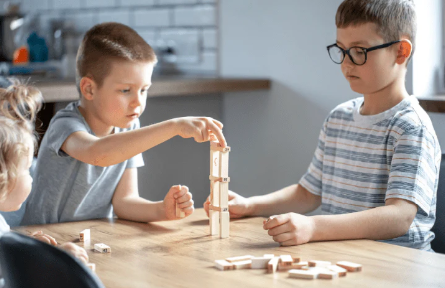Welcome back, knowledge seekers! Today, we delve into the world of educational reflection, tackling your burning questions about effective teaching practices. Grab a cup of tea (or your favorite learning fuel) and let’s dive in!

Question: How can I make traditional lectures more engaging for students?
Answer: Lectures can be powerful tools, but a one-size-fits-all approach might leave students feeling disengaged. Spice things up by incorporating interactive elements! Here are some ideas:
Pose thought-provoking questions throughout the lecture. Encourage students to jot down answers or discuss them with a partner.
Incorporate multimedia elements. Use images, videos, or even short audio clips to illustrate your points and keep students visually stimulated.
Break it down! Chunk your lecture into smaller, digestible sections and interweave activities or discussions to keep students actively involved.
Turn the tables! Dedicate a portion of the lecture to student presentations or debates on the topic.
Question: How can I encourage students to take more responsibility for their learning?
Answer: Fostering student ownership is key to deeper learning! Here are some strategies:
Empower students with choice. Offer options for assignments, projects, or even learning activities whenever possible.
Set SMART goals together. This stands for Specific, Measurable, Achievable, Relevant, and Time-bound. Working collaboratively on goals empowers students and helps them track their progress.
Embrace self-reflection. Create opportunities for students to reflect on their learning styles, strengths, and areas for improvement. This can be done through journaling prompts or self-assessment exercises.
Utilize technology. Many learning platforms allow students to track their progress, set goals, and access resources independently.
Question: I struggle with classroom management. Any tips to create a positive learning environment?
Answer: A positive and respectful classroom is crucial for effective learning. Here are some building blocks:
Establish clear expectations. Be transparent about classroom rules and routines from day one.
Build relationships with your students. Take time to get to know them as individuals and create a sense of community in the classroom.
Focus on positive reinforcement. Catch students being good! Praise positive behavior and effort to create a culture of encouragement.
Incorporate movement breaks. Especially for younger learners, short bursts of activity can help students refocus and improve concentration.
Question: How can I effectively differentiate instruction to cater to diverse learners?
Answer: One size doesn’t fit all! Here are some tips for differentiation in the classroom:
Offer tiered activities. Provide varying levels of complexity and support to cater to different learning styles and paces.
Utilize choice boards. Present students with a menu of options for completing tasks or demonstrating their understanding.
Offer flexible grouping. Allow students to work in groups based on learning goals, skill sets, or interests.
Embrace technology. Many digital tools can offer individualized learning paths and cater to diverse learning styles.
Question: Can you share some strategies for incorporating technology effectively into the classroom?
Answer: Technology can be a powerful learning tool, but it’s important to use it strategically. Here are some tips:
Align technology with learning objectives. Don’t use technology for the sake of it. Ensure it enhances the learning experience and helps students achieve specific goals.
Focus on student engagement. Choose technology that encourages active participation and student-centered learning.
Be mindful of screen time. Balance digital learning with traditional methods to avoid screen fatigue and allow for critical thinking and collaboration.
Model digital citizenship. Teach students responsible online behavior and safe practices while using technology in the classroom.
Question: I find grading overwhelming. How can I make the assessment process more efficient and effective?
Answer: We hear you! Grading can be a time-consuming task. Here are some strategies to streamline the process and make assessments more meaningful:
Utilize self-assessment and peer assessment. Encourage students to reflect on their own learning and provide constructive feedback to peers.
Focus on formative assessment. Use frequent checks for understanding throughout the learning process, allowing you to adjust instruction as needed.
Embrace technology. There are many online grading platforms that can save you time and provide valuable data on student progress.
Prioritize quality over quantity. Focus on assessments that truly measure student understanding and mastery of key concepts.
Question: How can I encourage creativity and critical thinking skills in my students?
Answer: These are essential 21st-century skills! Here are some ways to nurture them:
Embrace open-ended questions. Move beyond rote memorization and encourage students to think critically and creatively about the world around them.
Project-based learning is your friend! Provide students with opportunities to solve real-world problems, encouraging collaboration and creative thinking.
Incorporate brainstorming activities. Create a safe space for students to share ideas freely, no matter how outlandish they may seem.
Nurture a culture of inquiry. Encourage students to ask questions, explore different perspectives, and challenge assumptions.
Question: How can I effectively deal with disruptive behavior in the classroom?
Answer: Disruptions can hinder learning for everyone. Here are some proactive approaches:
Focus on prevention. Establish clear expectations and routines at the beginning of the year.
Address disruptions promptly and calmly. Focus on the behavior, not the student.
Utilize positive reinforcement. Acknowledge and reward students who are following classroom expectations.
Develop a plan for redirection. Have strategies in place to help students refocus and rejoin the learning activity.
Question: I feel overwhelmed by the ever-changing educational landscape. How can I stay up-to-date on new trends and best practices?
Answer: The world of education is dynamic, but you don’t have to go it alone! Here are some resources:
Connect with your fellow educators. Online forums, professional development workshops, and collaborating with colleagues are fantastic ways to share ideas and learn from each other.
Embrace educational blogs and podcasts. Many educators share valuable insights and practical strategies online.
Follow reputable educational organizations on social media. Stay informed about current research and best practices.
Never stop learning! Take advantage of professional development opportunities to enhance your skills and knowledge.
Question: What are some tips for maintaining a healthy work-life balance as an educator?
Answer: Educators are superheroes, but even superheroes need self-care! Here are some reminders:
Set boundaries. Learn to say no and prioritize your well-being.
Delegate tasks when possible. Don’t try to be a one-person show.
Schedule time for yourself. Make time for activities you enjoy, whether it’s reading a book, spending time with loved ones, or pursuing a hobby.
Seek support. Don’t be afraid to reach out to colleagues, mentors, or even a therapist if you’re feeling overwhelmed.
Remember, you are not alone in this incredible journey of educating young minds! We’re here to support you every step of the way. Keep those questions coming, and together, let’s create a vibrant and thriving learning environment for all.










